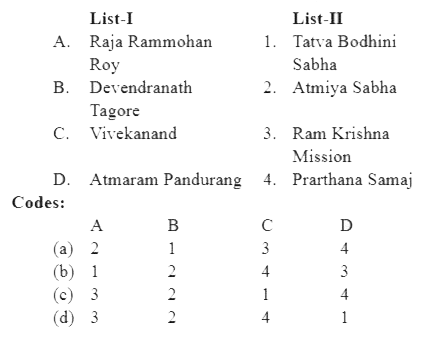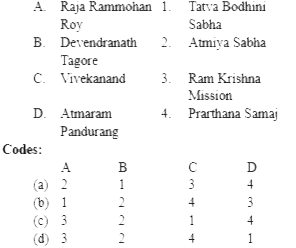Different types of excretory structure and animals are given below . Match them appropriately and mark the correct answer from among those given below .

A
(d)-(i), (c)-ii (b)-iii , (a)-iv
B
(b)-(i) , ( c) - (ii) , (a) - (iii) ,(b) - (iv)
C
(d) - (i) , ( c) - (ii) , (a) - (iii) , (b) - (iv)
D
(b)-(i) , ( c)- (ii) , (b) - (iii) , (d) - (iv)
Video Solution
Text Solution
The correct Answer is:A
|
Topper's Solved these Questions
- EXCRETORY PRODUCTS AND THEIR ELIMINATIONBOOK - A2ZCHAPTER - EXCRETORY PRODUCTS AND THEIR ELIMINATIONEXERCISE - Section C: Previous Years' Examination Questions (NEET/AIPMT Questions)
88 Videos
- EXCRETORY PRODUCTS AND THEIR ELIMINATIONBOOK - A2ZCHAPTER - EXCRETORY PRODUCTS AND THEIR ELIMINATIONEXERCISE - Section D : Chapter-end Test
100 Videos
- Digestion and AbsorptionBOOK - A2ZCHAPTER - Digestion and AbsorptionEXERCISE - Section D : Chapter-end Test
50 Videos
- LOCOMOTION AND MOVEMENTBOOK - A2ZCHAPTER - LOCOMOTION AND MOVEMENTEXERCISE - Section D : Chapter-end Test
50 Videos
Similar Questions
Knowledge Check
Select the correct statement from those given below.
ALegumes are incapable of fixing nitrogenBLegumes fix nitrogen through bacteria living in fruitsCLegumes fix nitrogen only by bacteria present in root nodulesDAll legumes have stem nodules
Choose the correct answer from the options given below :A(a)–(ii),(b)–(iii),(c)–(i),(d)–(iv)B(a)–(ii),(b)–(i),(c)–(iii),(d)–(iv)C(a)–(iii),(b)–(iv),(c)–(ii),(d)–(i)D(a)–(iii),(b)–(iv),(c)–(i),(d)–(ii)Identify the incorrect match from those given below
AJelly fish Aurelia aurita ScyphozoaBPaddle worm Chaetopterus PolychaetaCCray fish Oniscus CrustaceaDAcom worm Balanoglossus Enteropneusta
Match the following and choose the correct answer from the codes given below:

View SolutionMatch the columns and choose the correct answer from the options given below

View SolutionMatch the following and select the correct answer from the codes given below:

View SolutionMatch the following and select the correct answer from the codes given below.

View SolutionMatch the columns and choose the correct answer from the options given below

View Solution



